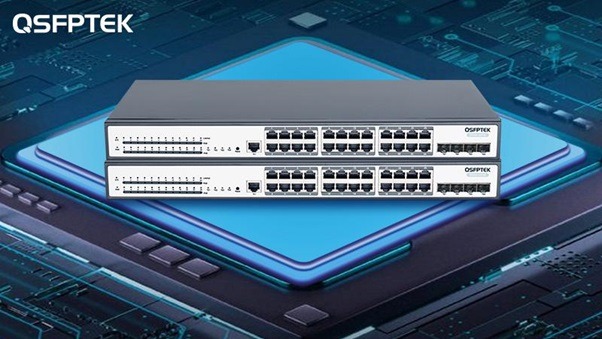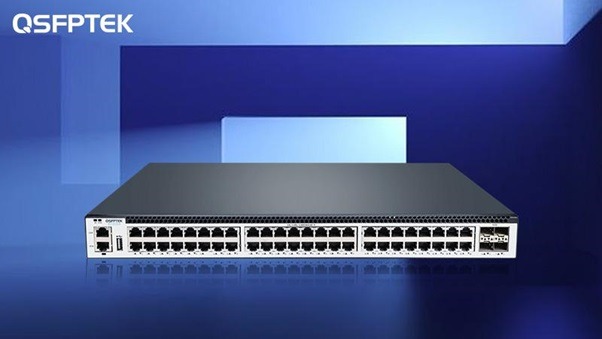As technology evolves, businesses must also adapt and improve their network infrastructure to keep up with the demands of modern-day communication. One of the most essential components of any network is the network switch. It is a device that allows multiple devices to communicate with each other in a local area network (LAN). In recent years, the 10G network switch has emerged as a game-changer in network infrastructure. In this article, we will explore the benefits of 10G network switches and how they can transform your network infrastructure.
What is a 10G Network Switch and How Does it Work?
A 10G network switch, also known as an Ethernet switch, is a device that connects multiple devices in a network and directs data traffic between them. It is designed to work at data transfer speeds of up to 10 gigabits per second (Gbps), making it ten times faster than traditional Gigabit Ethernet switches. 10G network switches can operate at both Layer 2 and Layer 3 of the networking model, making them compatible with a wide range of devices.
The Advantages of Using 10G Network Switches to Improve Your Network’s Performance
Faster Data Transfer Speed: The most significant advantage of using a 10G network switch is its lightning-fast data transfer speed. With a data transfer speed of up to 10 Gbps, 10G switches can handle a massive amount of data without any bottlenecks. This translates into faster file transfers, quicker backups, and seamless video conferencing without any lag or buffering.
Reduced Latency: Latency is the time delay between data transmission and receipt. In a network, high latency can cause significant delays, leading to poor performance. 10G network switches have low latency, allowing data to be transmitted and received almost instantaneously. This can significantly improve the performance of real-time applications such as online gaming, video conferencing, and live streaming.
Increased Port Density: As businesses grow, they require more network ports to connect their devices. 10G network switches can support a high number of ports, allowing businesses to connect more devices to their network without compromising on performance. This not only saves on hardware costs but also reduces the complexity of network management.
How to Choose the Right 10G Network Switch for Your Organization
When choosing a 10G network switch, there are several factors to consider. These include:
Gigabit Ethernet Switch: Before investing in a 10G network switch, ensure that your devices support 10G speeds. If not, a Gigabit Ethernet switch might be more appropriate. It is cheaper and supports data transfer speeds of up to 1 Gbps.
Best Network Switches for Small Businesses: Small businesses may not require the most expensive 10G network switches. Instead, they should consider managed or unmanaged switches, depending on their level of network management expertise.
Managed vs. Unmanaged Switches: Managed switches offer advanced features such as VLANs, QoS, and port mirroring, making them ideal for large networks that require a high level of customization. Unmanaged switches, on the other hand, are plug-and-play devices that require no configuration, making them suitable for small networks.
What Are The Benefits of Using a 10G Network Switch Over a Router?
Routers and switches are two different devices that perform different functions in a network. A router connects two or more networks and routes data between them, while a switch connects multiple devices within a single network. While routers are essential for connecting networks, they are not as efficient as switches when it comes to connecting devices within a network. Here are some benefits of using a switch over a router:
Switches have a lower latency than routers, making them more efficient at handling data traffic within a network
Switches offer greater bandwidth and faster data transfer speeds than routers. While routers can provide internet access to multiple devices, they often have limited bandwidth, which can lead to slow network performance.
Switches can support more devices than routers. Most routers only have a limited number of Ethernet ports, which means that businesses with many devices may need to invest in additional switches to connect them all.
Switches provide better security than routers. Switches can use advanced security protocols such as VLANs and port security to ensure that only authorized devices can access the network. Routers, on the other hand, often rely on firewalls and other security measures to protect the network.
Three Reasons Why You Should Invest in 10G network switch
Improved Network Performance: The faster data transfer speeds and lower latency of 10G network switches can significantly improve the performance of your network. This can lead to faster file transfers, quicker backups, and smoother video conferencing and live to stream.
Scalability: As businesses grow, they require more network ports to connect their devices. 10G network switches can support a high number of ports, making them ideal for businesses that need to connect a large number of devices.
Future-Proofing: With the increasing demand for high-bandwidth applications, such as virtual reality, 4K video, and IoT devices, the need for faster network speeds is only going to increase. Investing in a 10G network switch now can help future-proof your network and ensure that it can handle the demands of tomorrow.
Conclusion
In today’s fast-paced business environment, network performance is crucial to the success of any organization. 10G network switches offer a range of benefits that can transform your network infrastructure, including faster data transfer speeds, reduced latency, and increased port density. By choosing the right 10G network switch for your organization and investing in this technology, you can future-proof your network and ensure that it can handle the demands of tomorrow.


